My Downton Abbey-Like Family History and the Writing of Greedy Heart, a Novel
My Downton Abbey-Like Family History and the Writing of Greedy Heart, a Novel
- Descending from the inventor who brought electrical power to New York City.
- Having your portrait done by an artist who painted presidents.
- Living with a world-famous fashion model as your mother.
- Wondering if a hushed-up family suicide was really foul play.
Sounds like an intro trailer for the next series in the Downton Abbey franchise, Downton New York?
These descriptions are actually plucked from my own backstory, which inspired my debut novel, Greedy Heart.
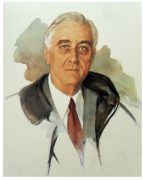 Fact: My great-grandfather, Thomas E. Murray, invented the mass distribution of electrical power.
Fact: My great-grandfather, Thomas E. Murray, invented the mass distribution of electrical power.
That was Thomas Edison, you say?
Edison mostly invented the end products, the devices that ran on electricity like the light bulb, the movie camera, and the phonograph. My great grandad, friend and colleague of Edison, is responsible for everything that made Edison’s brainchildren work: Power generation technology and distribution, junction boxes, fuses, the domestic circuit breaker, and even the switch to turn the light bulb on and off. Thomas E. Murray invented all this, and it made him rich.
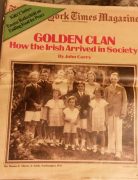 For several generations, my family was a New York Irish Catholic version of the Crawleys. There was a private mansion on Park Avenue. A hundred-acre compound in Southampton, Long Island. My father, a handsome and wealthy playboy—because in the Downton New York reboot, of course there has to be one of those—married a world-famous fashion model.
For several generations, my family was a New York Irish Catholic version of the Crawleys. There was a private mansion on Park Avenue. A hundred-acre compound in Southampton, Long Island. My father, a handsome and wealthy playboy—because in the Downton New York reboot, of course there has to be one of those—married a world-famous fashion model.
And, yes, when I was a child, Elizabeth Shoumatoff painted my portrait. Shoumatoff is the woman famous for the unfinished picture of FDR.
By the time I was a teenager, my family had rolled down the financial hill from great wealth to normal middle class.
All these characters and events populate Greedy Heart.
There’s a danger, as many writers know, in using your own backstory as the basis for a novel. For one, you have to ask yourself why you aren’t writing a memoir. Another risk is finding yourself writing a loose novelization. In today’s publishing market, your story has to be the Xtreme Sports version of a life in order for either of those approaches to succeed.
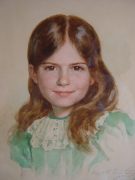 When I boiled it down, the tagline for my memoir or novelization would have gone something like, “We used to be rich. Now we’re not. Bummer. Also, my mother was a model.”
When I boiled it down, the tagline for my memoir or novelization would have gone something like, “We used to be rich. Now we’re not. Bummer. Also, my mother was a model.”
Most importantly in my decision against memoir and novelization was that what I truly wanted to write was a real-deal novel —whether it was based on my personal history or not. Still, I felt my personal history would be useful.
So how do you use personal history and create a novel that stands on its own?
My answer: Paints in a paint box.
Having an interesting backstory is like having access to a painter’s palette with unusually vivid colors. The idea is to employ the colors, but they can’t be the story.
Another way of saying this is that the plot must have an independent structure, one that functions on its own merits as a plot, regardless of what did or did not happen IRL.
When I found myself thinking, “That’s not what really happened.” Or, “Mom would never have done such and such,” I knew I was in trouble. I was letting my history drive the plot, rather than using the settings, events, and people in my life as pigments in a paint box.
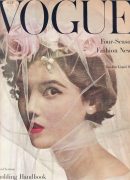 To make sure I had a stand-on-its-own plot, I started with the premise that a great story involves a big reversal. A character starts at A and through the events of a novel ends up at B. Think of Cinderella going from the ashes to marrying a prince. I like to call this “swing for the bleachers” approach. If your character is going to end up at B, what is the farthest possible place away from B they can start? Find that, and you’re swinging for the bleachers.
To make sure I had a stand-on-its-own plot, I started with the premise that a great story involves a big reversal. A character starts at A and through the events of a novel ends up at B. Think of Cinderella going from the ashes to marrying a prince. I like to call this “swing for the bleachers” approach. If your character is going to end up at B, what is the farthest possible place away from B they can start? Find that, and you’re swinging for the bleachers.
In my real life, no matter how interesting the people surrounding me might be, they mostly stay the same. Sure, they bounce up and down a bit. But that’s all. Think of your own family. Your dad is pretty much your dad. When writing Greedy Heart, whether it was people, events or places, I pushed them to be more extreme, more colorful, more swing-for-the-bleacher-y. If I wanted them to end up one way, I decided I had to start with them being the opposite of that.
With this approach, the characters as they emerged in the story were not my mom, my dad, or a yoga instructor I once knew. They became their own selves, separate and independent from my personal history.
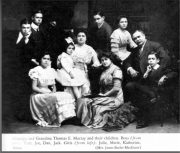 Here’s the funny thing, though. People see themselves in a story no matter what you do. A neighbor who read an advanced copy of Greedy Heart came up to me in my building lobby and exclaimed, “This is fantastic! I’m the yoga instructor!”
Here’s the funny thing, though. People see themselves in a story no matter what you do. A neighbor who read an advanced copy of Greedy Heart came up to me in my building lobby and exclaimed, “This is fantastic! I’m the yoga instructor!”
And my dad, who also read an early version, had this comment about the character of Bert, an NYPD detective. “You know what Bert always used to say? ‘There’s no luggage rack on a hearse.’”
I have no idea who Bert is in my father’s mind. But as for the luggage rack/hearse comment—I’m definitely putting that in some character’s mouth in the future.
By now you may be wondering about the final personal fact from above, the one I haven’t yet mentioned, the suicide-that-was-really-foul-play.
Yes, that’s in there too. And it’s the closest to real life in the book.
—-
 Anna P. Murray is the author of Greedy Heart, a debut novel about inheritance, attraction, greed, infidelity, hoarding, and morality told through a fictional tale of the financial crash.
Anna P. Murray is the author of Greedy Heart, a debut novel about inheritance, attraction, greed, infidelity, hoarding, and morality told through a fictional tale of the financial crash.
A technology consultant by day, Murray began her career as a teacher and journalist before founding an early stage web company, which built many national brands’ first websites.
The firm, tmg-emedia, later expanded into broad-ranging technology consulting. Murray has won multiple awards for her technology leadership and as a woman tech entrepreneur.
GREEDY HEART, A.P. Murray
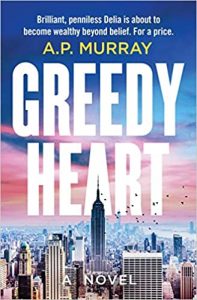 For Delia, math just makes sense–more sense than people, anyway.
For Delia, math just makes sense–more sense than people, anyway.
It’s 2006, and Delia Mulcahy is living in a shabby apartment and facing crushing student debt. Suddenly, she’s plucked from obscurity to work for Wall Street’s top hedge fund. Determined to make her millions, Delia must master the cutthroat world of big-stakes trading and profit off of the cataclysm of the looming crash.
In the underbelly of finance, no one is who they say they are. Delia finds herself embroiled in devious schemes and duplicitous deals as her recklessness threatens every relationship in her life: family, friends and especially the two rival CEOs vying for her genius.
It’s a high-risk game and she is a better player than most. When her soul is on the line, how much is enough for her greedy heart?
BUY THE BOOK HERE
Category: On Writing






























